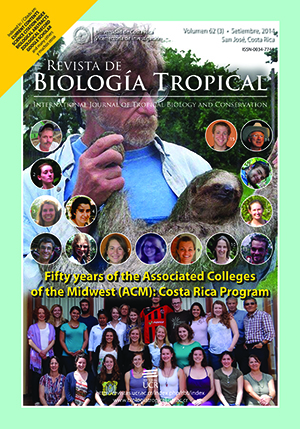Abstract
Floodplain lakes and associated wetlands in tropical dry climates are controlled by pronounced and severe seasonal hydrologic fluctuations. We examined the plant community response to a bimodal flooding pattern in the Zapatosa Floodplain Lake Complex (ZFLC), northern Colombia. We measured floristic and quantitative change in four sampling periods emphasizing seasonal differences in plant abundance and life-form structure. Of 79 species identified in the lake complex, 52 were used to characterize eight community types via classification and ordination procedures. Results show that community structure does not change significantly during the flooding/receding stages. But maximum drawdown phase significantly disrupts the aquatic community structure and the exposed shorelines become colonized by ruderal terrestrial plants. Early rainfalls at the beginning of the wet season are emphasized as an important feature of plant regeneration and community development. The general strategy of the ZFLC vegetation can be framed into the flood pulse concept of river-floodplain systems. Thus, plant communities are mainly responding to disturbances and destruction events imposed by extreme water level fluctuations.Comments

This work is licensed under a Creative Commons Attribution 4.0 International License.
Copyright (c) 2014 Revista de Biología Tropical
Downloads
Download data is not yet available.






